Filter by
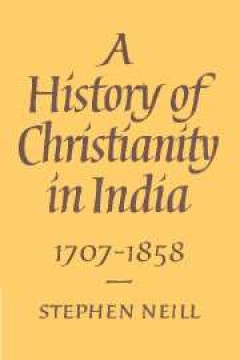
A History of Christianity in India 1707–1858
This book, a sequel to Bishop Neill's A History of Christianity in India: The Beginnings to 1707, traces its subject from the death of Aurunzib to the so-called Indian Mutiny. The history of India since 1498 is of a tremendous confrontation of cultures and religions. Since 1757, the chief part in this confrontation has been played by Britain; and the Christian missionary enterprise, especially …
- Edition
- -
- ISBN/ISSN
- 9780511520563
- Collation
- -
- Series Title
- -
- Call Number
- -
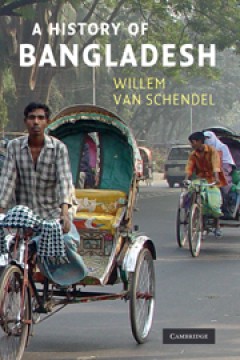
A History of Bangladesh
Bangladesh is a new name for an old land whose history is little known to the wider world. A country chiefly famous in the West for media images of poverty, underdevelopment, and natural disasters, Bangladesh did not exist as an independent state until 1971. Willem van Schendel's history reveals the country's vibrant, colourful past and its diverse culture as it navigates the extraordinary twis…
- Edition
- -
- ISBN/ISSN
- 9780511997419
- Collation
- -
- Series Title
- -
- Call Number
- -

A Grammar of Kham
First published in 2002, this is a comprehensive grammatical documentation of Kham, a previously undescribed language from west-central Nepal, belonging to the Tibeto-Burman language family. The language contains a number of grammatical systems that are of immediate relevance to current work on linguistic theory, including split ergativity, a mirative system, and a rich class of derived adjecti…
- Edition
- -
- ISBN/ISSN
- 9780511486883
- Collation
- -
- Series Title
- Cambridge Grammatical Descriptions
- Call Number
- -
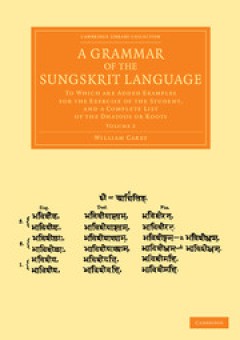
A Grammar of the Sungskrit Language to Which Are Added Examples for the Exer…
The Indo-Aryan language of Sanskrit is the primary language of Hinduism and also a scholarly language of Buddhism. Dating back to the second millennium BCE, it is considered to be the parent of most modern languages of India, and remains central to work in Indo-European studies, philology and linguistics today. First published in 1806, this is a comprehensive grammar of Sanskrit, compiled by th…
- Edition
- -
- ISBN/ISSN
- 9781139507271
- Collation
- -
- Series Title
- Cambridge Library Collection - Perspectives from the Royal Asiatic Society
- Call Number
- -
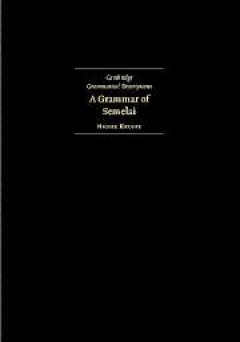
A Grammar of Semelai
Semelai is a previously undescribed and endangered Aslian (Mon-Khmer) language of the Malay Peninsula. This book - the first in-depth description of an Aslian language - provides a comprehensive reference grammar of Semelai. Semelai intertwines two types of morphological system: a concatenative system of prefixes, suffixes and a circumfix - acquired through extended contact with Malay - and a n…
- Edition
- -
- ISBN/ISSN
- 9780511550713
- Collation
- -
- Series Title
- Cambridge Grammatical Descriptions
- Call Number
- -

A Grammar of the Mahratta Language To Which Are Added Dialogues on Familiar …
Marathi, an official language of Maharashtra and Goa, is among the twenty most widely spoken languages in the world. The southernmost Indo-Aryan language, it is also spoken in Gujarat, Madhya Pradesh, Karnataka, and Daman and Diu, and is believed to be over 1,300 years old, with its origins in Sanskrit. First published in 1805, this grammar of Marathi (then known as Mahratta) was compiled by th…
- Edition
- -
- ISBN/ISSN
- 9781139519847
- Collation
- -
- Series Title
- Cambridge Library Collection - Perspectives from the Royal Asiatic Society
- Call Number
- -

A Grammar of the Mahratta Language To Which Are Added Dialogues on Familiar …
Marathi, an official language of Maharashtra and Goa, is among the twenty most widely spoken languages in the world. The southernmost Indo-Aryan language, it is also spoken in Gujarat, Madhya Pradesh, Karnataka, and Daman and Diu, and is believed to be over 1,300 years old, with its origins in Sanskrit. First published in 1805, this grammar of Marathi (then known as Mahratta) was compiled by th…
- Edition
- Ed. 1
- ISBN/ISSN
- 9781139519847
- Collation
- -
- Series Title
- -
- Call Number
- -

A Grammar of the High Dialect of the Tamil Language, Termed Shen-Tamil
Published in 1822, but completed in manuscript form almost 100 years earlier, this work was designed to accompany Beschi's earlier Grammar of Common Tamil. While the latter enabled the student to speak the language, this reissue offers a way into reading Tamil's classical literature with its complexity of thought and technique. One of the earliest and most distinguished pioneers in the field of…
- Edition
- -
- ISBN/ISSN
- 9781139505918
- Collation
- -
- Series Title
- Cambridge Library Collection - Perspectives from the Royal Asiatic Society
- Call Number
- -
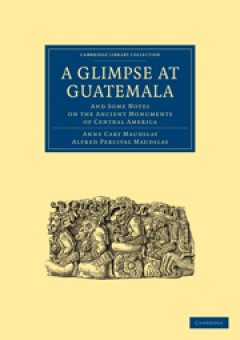
A Glimpse at Guatemala, and Some Notes on the Ancient Monuments of Central Am…
Alfred Percival Maudslay (1850–1931) was a British colonial administrator and archaeologist who is widely considered the founder of modern Mesoamerican archaeology. After graduating from Trinity Hall, Cambridge, in 1872 Maudslay made his first visit to Guatemala before becoming a colonial administrator working in Trinidad and Fiji. After retiring from colonial service in 1880 he returned to G…
- Edition
- -
- ISBN/ISSN
- 9780511686962
- Collation
- -
- Series Title
- Cambridge Library Collection - Archaeology
- Call Number
- -

A Diplomat in Japan The Inner History of the Critical Years in the Evolution…
A brilliant linguist, Sir Ernest Satow (1843–1929) was recruited into the British consular service as a student interpreter in 1861. The following year he arrived in Japan, where he witnessed the overthrow of the Tokugawa Shogunate and the Meiji restoration of imperial rule. Drafted in the 1880s while he was consul-general in Bangkok, this 1921 account is based on the voluminous diaries Satow…
- Edition
- -
- ISBN/ISSN
- 9781316144671
- Collation
- -
- Series Title
- Cambridge Library Collection - East and South-East Asian History
- Call Number
- -
 Computer Science, Information & General Works
Computer Science, Information & General Works  Philosophy & Psychology
Philosophy & Psychology  Religion
Religion  Social Sciences
Social Sciences  Language
Language  Pure Science
Pure Science  Applied Sciences
Applied Sciences  Art & Recreation
Art & Recreation  Literature
Literature  History & Geography
History & Geography